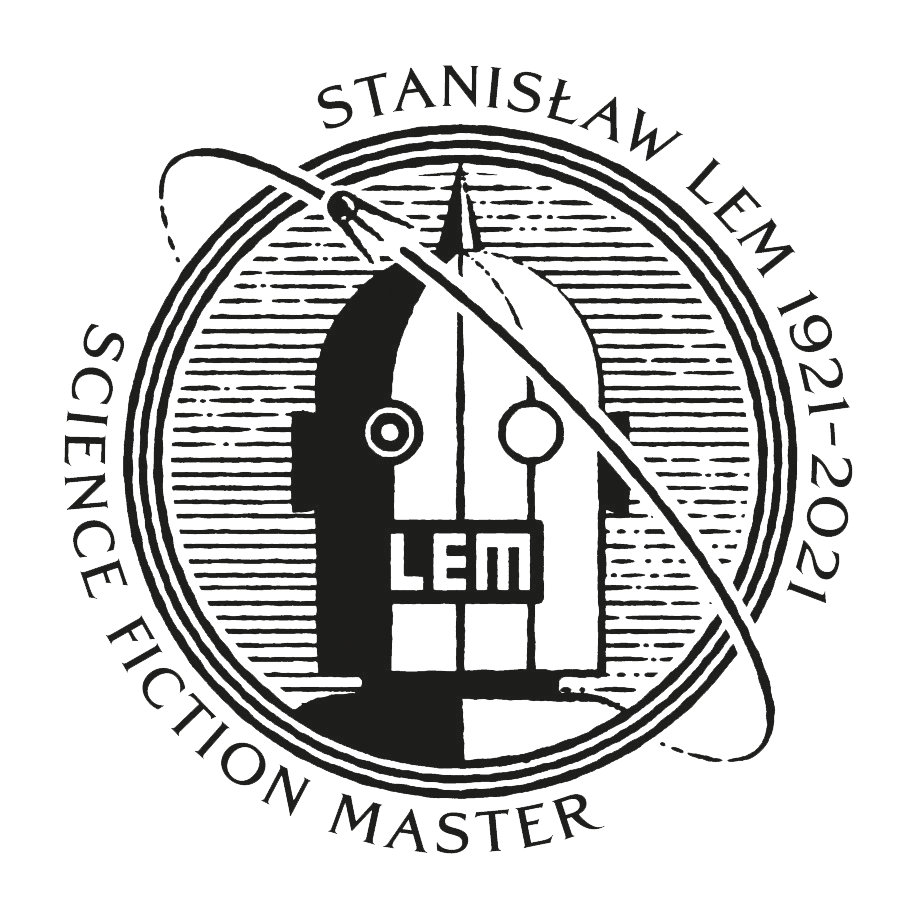Master of science-fiction
Coins featuring the works of Stanisław Lem
The Mint of Gdańsk was the only one in the world to receive the right to issue collector coins with the image and works of Stanisław Lem.
Silver collector coins are characterized by a very high relief and interesting additions. Each coin is packed with a certificate of authenticity in an elegant box.
Collector coins are also characterized by a limited mintage, emphasizing their uniqueness. Mintage of each 2 oz silver coin is 2000 pieces, 200 g coins - 100 pieces. On the other hand, the mintage of the 1 oz gold coin is 150 pcs, and the 1/10 oz gold coin - 1000 pcs. Mintages will never be increased.
Coins with the work of Stanisław Lem are full-fledged coins - they have a denomination and a government guarantee. Due to the Polish law, only the National Bank of Poland has the ability to issue coins with the currency denominated in PLN. For this reason, our coins have a denomination expressed in euros, and the guarantee of their authenticity and legality is provided by Malta.
The following versions will appear in the series:
- Silver, 2 oz Ag - 8 coins
- Silver, 200 g Ag - 8 coins
- Gold, 1/10 oz, 1 oz Au – 2-4 coins
- Silver, 1 oz, 2 oz Ag BU - 2-4 coins
- Silver, 3D 3 oz and 10 oz Ag - 3 coins
Issuance plan (subject to change)
Stanislaw Lem
Solaris
2023
The Invincible
Tales of Pirx the Pilot
2024
Fables for Robots
The Star Diaries
2025
The Futurological Congress
The Cyberiad
2026
Stanisław LEM
Stanisław Lem was a Polish hard science fiction writer, philosopher and futurologist. Born on September 12, 1921 in Lviv, died on March 27, 2006 in Krakow.
His work deals with topics such as the development of science and technology, human nature, the possibility of communication between intelligent beings and the place of man in the Universe. Lem's works contain references to the state of society and scientific and philosophical reflections on it.
In addition to science fiction stories, such as "Star Diaries" or the series of adventures of the pilot Pirx, the writer's output also includes detective novels ("Investigation"), futurological essays and dissertations (including "Summa technologie"), poetry, scripts for radio plays, films or dramas, as well as the one-of-a-kind cosmic fairy tales "Fables for Robots".
One of the numerous expressions of international recognition for the work of Stanisław Lem was the naming of an asteroid discovered in September 1970, as well as the first scientific satellite built entirely in Poland, after him.
In Poland, Stanisław Lem's books are published by Wydawnictwo Literackie, with which the writer was associated almost throughout his career.


Stanisław Lem's successes
The most frequently translated Polish writer
His books have been translated into over 52 languages
The circulation of his books is over 40 million copies
The writer's name is borne by the asteroid (3836) Lem, belonging to the main asteroid belt, which was discovered on September 22, 1979.
Lem is also the second artificial satellite entirely built in Poland, and at the same time the first Polish scientific satellite, which was launched into Earth orbit on November 21, 2013.
The heroes of Lem's books were also cosmically commemorated: the asteroid (343000) Ijontichy owes its name to Ijon Tichem
One of the craters on Pluto's largest moon is named after the pilot Pirx
The name Pirx was also given to a planet orbiting a star discovered in 2019 in the constellation of Pegasus - while the star itself was named Solaris
In 1970 he received the Award of the Minister of Foreign Affairs for popularizing Polish culture abroad
In 1972 he became a member of the Commission of the Polish Academy of Sciences "Poland 2000"
In 1976 and 1980 he received the "Eurocon" European Science Fiction Congress Award
In 1977, he received the Japanese "Seiun" award for the best translated short fiction for the short story "The Dissertation"
In 1991 he received the Austrian State Prize of Franz Kafka in the field of literature
In 1996 he was awarded the Order of the White Eagle, the oldest and highest state decoration of the Republic of Poland
In 2001, he received the Golden Scepter - an award from the Polish Culture Foundation for "thinking ahead of his time"
He received at least five academic honorary titles "Doctor honoris causa" awarded by universities to people of particular merit for science and culture.



